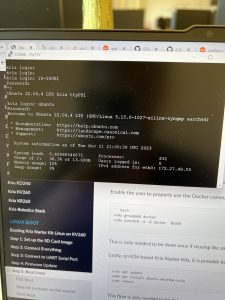This week I worked on finalizing the client communication with the FPGA based on how Anirudh and Andrew configured it (in terms of where data ready flags are set and where output data is sent). Although we have accepted that there will be some resource starvation in our multi-client implementation, I ensured that when the client accesses the flag that signals the FPGA is ready to receive data, that is an atomic action that prevents other clients from simultaneously trying to send their prompts. This also simplifies the process of ensuring the correct data gets to the correct user, since now the only client who will be looking for data from the FPGA will be the one whose request is being processed. I also updated the lua script to read the FPGA data out of a file the python script scps back to the client device. Everything on the client side is now ready to be integrated with the FPGA side. My repo with the code I’ve been working on can be found here.
I am on schedule and completed everything I planned to complete this week. My goals for next week are to have successful interim demos and also integrate my scripts with the hardware.


